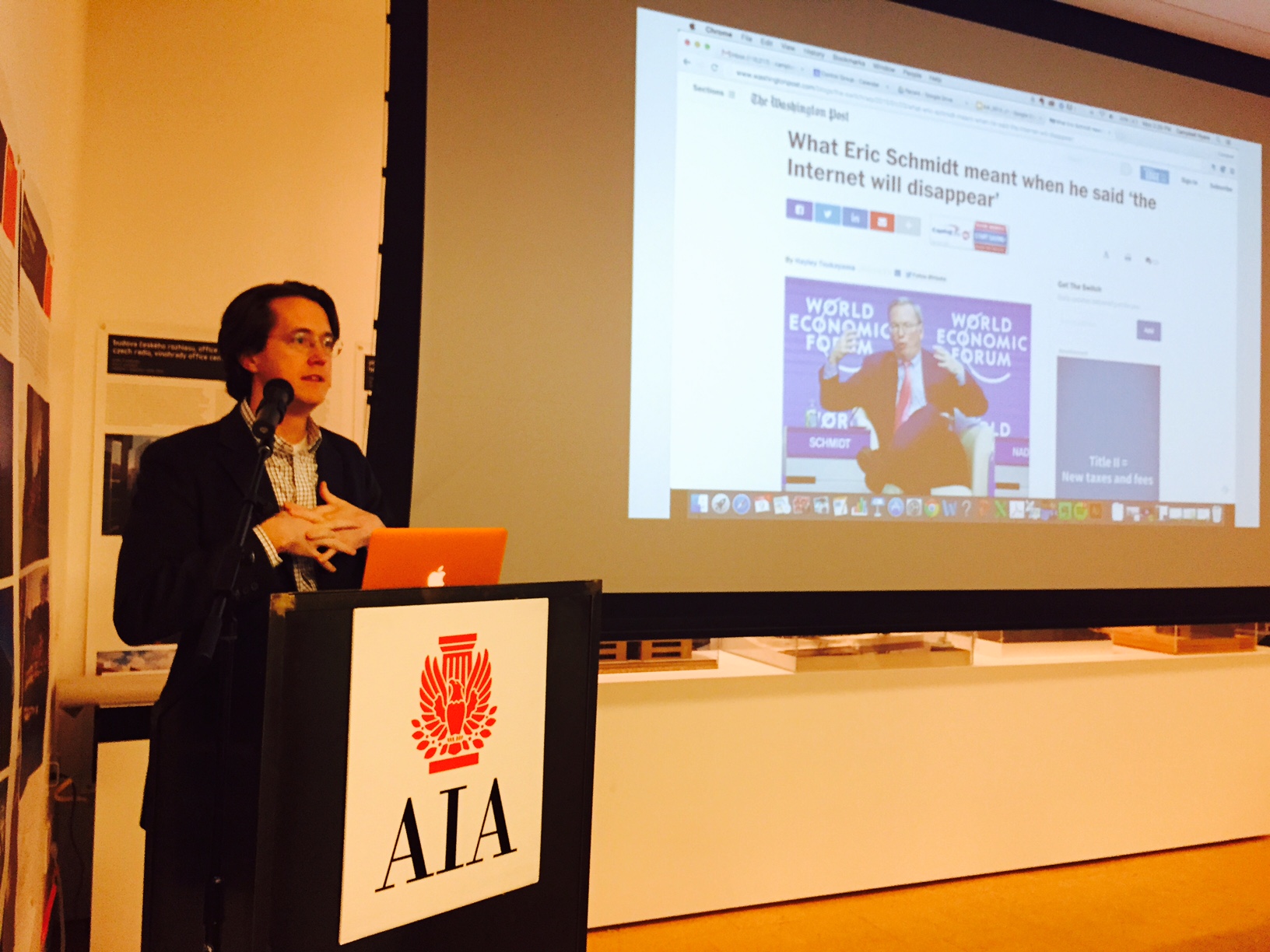by: James Way
Building on his previous presentations in the Transforming Architectural Practice (TAP) series, Campbell Hyers, CEO and co-founder of Control Group, returned to the Center for Architecture to further reveal how digital infrastructure is disappearing, to paraphrase Google CEO Eric Schmitt. Hyers presented a number of projects and, more importantly, processes that show how the Internet is “being absorbed in the world around us.” This vanishing digital infrastructure will help people navigate, shop, and communicate – and also maintain the civic realm.
While in physical space, the term ”shared spaces” denotes a mix of vehicular and pedestrian uses, in digital space, the term signifies an environmentally responsive location that reacts to the mixed motivations of users. Kiosks will begin to anticipate user needs, such as =wayfinding, retail offerings, or contextual spatial information based on real-time data. Control Group’s LinkNYC and “On the Go” kiosks and NYC’s mobile 311 app are already active examples, as are civic hubs – physical and virtual – that collate users’ real-time data to influence how civic space is used and developed.
Many projects begin with looking at systems and master plans. For digital infrastructures, Hyers suggests that designers look at the desired experience and digital vision first, and then develop the systems to make those visions possible. While architecture and urbanism take years to implement, digital infrastructures can be developed in weeks, which can create a disconnect between planning and realization – both costs and possibilities can change drastically within these timeframes. To ensure that these infrastructures remain responsive and develop with users’ needs, the system must generate value either in revenue or human use.
One question from the audience was how security fits into this new public digital infrastructure. Hyers quickly identified the difference between security, the defensibility of systems from outside invasion (hackers), and privacy, the aggregate of identity – legal, social, and psychological. While the former is serious, it’s the latter that is more of a concern when using these social tools, and it is a user decision about what one is willing to share for the service – geoposition, contacts list, shopping patterns, and interests – that is really at risk.
In an era when Google is planning to launch 4,000 satellites to ensure instantaneous global connectivity, digital infrastructure is not really disappearing, but expanding from localized systems to a pervasive, seamless network built into our environments. While Hyers gave us a glimpse into the now and near future, he also inspired speculation and anticipation of the “what if.”
James Way, Assoc. AIA, Marketing Manager at Dattner Architects, frequently contributes to eOculus
Event: Transforming Arch Practice 2015: Building on Digital Infrastructure: Innovation, not Invention
Location: Center for Architecture, 02.09.15
Speaker: Campbell Hyers, CEO and Co-founder, Control Group
Organized by: AIANY Professional Practice Committee









